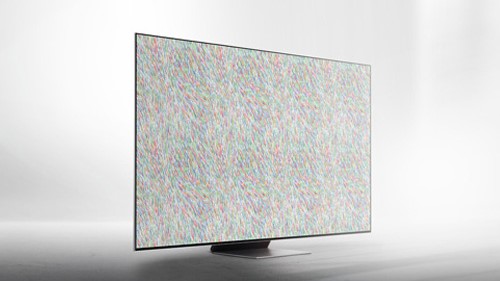There's a surprise problem with Samsung QD-OLED TVs that could delay their release
Samsung Display and Samsung Electronics are at odds on the cost of the new panels

After yesterday's news that Samsung is experiencing production issues with its new QD-OLED displays, fresh reports are now suggesting that the business arm of the brand has yet even to reach an agreement on the price it will pay for the new panels from its manufacturing division, Samsung Display, according to The Elec (via hdtvtest).
Reportedly, negotiations between the two companies over the cost per unit are still ongoing. Samsung Electronics is said to be petitioning to pay a price equivalent to what its primary competitor, LG Displays, charges for its own standard OLED panels. However, it has been suggested that Samsung Display is unwilling to accept these terms.
With neither side willing to compromise, Samsung is said to be considering delaying the release of its QD-OLED models, which had been expected to launch later this year.
Samsung Electronics isn't the only brand purchasing screens from Samsung Displays. The manufacturer also supplies QD-OLED panels to Sony, the first brand to officially announce it would be using the new panel technology. The uncertainties around Samsung's production may mean that Sony will also be first manufacturer to actually release a QD-OLED TV, namely its new A95K model.
Samsung Display is thought to have invested $11.7 billion in QD technologies since 2019. As it plans to end LCD production by 2022, it will certainly be looking for a considerable return on its new venture. However the company is said to be struggling with a low production yield rate of around 30% and is considering either investing in production with a view to boosting yield rates or "holding off" until such times as it can properly gauge "customer reaction to QD-OLED".
Sources say that even if Samsung Display does throw a big bundle of cash at the problem, QD-OLED capacity could "remain limited at 30,000 Gen 8.5 substrates monthly until the end of 2023".
The most recent report from The Elec suggests that Samsung was planning to buy 500,000 QD-OLED panels from Samsung Display, with the latter pricing each unit at about $100 more than LG Display’s WOLED panels.
Get the What Hi-Fi? Newsletter
The latest hi-fi, home cinema and tech news, reviews, buying advice and deals, direct to your inbox.
Theoretically, as QD-OLEDs are simpler in design and use fewer materials, manufacturing costs could eventually drop to below that of OLEDs, potentially making them cheaper to buy in the long run.
The Elec suggests that Vice Chairman of Samsung Electronics Lee Jae-yong, who oversees the entire business, may need to step in to resolve the issues between the squabbling factions. As a key proponent of Samsung's U-turn on OLED technology, Lee is said to be heavily vested in the venture's success and has visited Samsung Display’s QD-OLED plant on multiple occasions.
MORE
LG 2022 TV lineup: everything you need to know
QD-OLED TV: everything you need to know about the game-changing new TV tech
Mary is a staff writer at What Hi-Fi? and has over a decade of experience working as a sound engineer mixing live events, music and theatre. Her mixing credits include productions at The National Theatre and in the West End, as well as original musicals composed by Mark Knopfler, Tori Amos, Guy Chambers, Howard Goodall and Dan Gillespie Sells.
-
lovlid And the click bait surprise problem is???Reply
Negotiations?
Between rival companies??
Dear God!!!!
